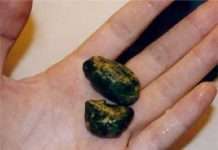The age-old debate of whether to fuel up before a workout or hit the gym on an empty stomach rages on. Both fasted and fed workouts have their proponents, each claiming superiority for muscle growth, fat burning, and overall performance.
But what does science really say about these two strategies? And which one ultimately reigns supreme for you?
The Power of Pre-Workout Fuel (Fed Workouts)
Eating before exercise, often called a “fed workout,” offers several advantages:
- Sustained Energy: Consuming carbohydrates beforehand replenishes your body’s glycogen stores – essentially, stored glucose that fuels your muscles during activity. This prevents fatigue and allows you to push harder, especially during longer or more intense workouts.
-
Performance Boost: Studies consistently show that fueling your muscles with a pre-workout snack or meal improves performance across the board: strength, power output, and endurance all get a lift.
-
Muscle Recovery Jumpstart: Protein consumed before exercise initiates muscle repair sooner, minimizing protein breakdown during your workout and setting the stage for faster growth.
What to Eat for Optimal Pre-Workout Fuel
Aim for a combination of carbohydrates and protein about 30 minutes to four hours before your session:
- Quick & Easy Snacks (30-60 Minutes Before):
- Banana with nut butter
- Whole-wheat toast with a hard-boiled egg
- Oatmeal with fruit
- More Substantial Meals (2-4 Hours Before):
- Low-fat Greek yogurt with granola
- Hummus and whole-grain crackers
- Fruit smoothie with protein powder, nut butter, or low-fat Greek yogurt
The Fasted Workout: Is Burning Fat Worth It?
Some people prefer to work out on an empty stomach – fasted workouts. The logic often centers around boosting fat burning since the body taps into stored fat for energy when glycogen is low. However, the evidence here is mixed.
-
Fat Burn Potential: While fasted workouts might lead to slightly increased fat oxidation, research hasn’t conclusively proven this translates to significant long-term weight loss compared to fed workouts.
-
Blood Sugar Impact: Studies on fasted cardio suggest potential benefits for insulin sensitivity and blood sugar control over time, but newer research raises questions about potential spikes in glucose levels during fasted exercise.
- Digestive Comfort: Working out without food can alleviate nausea, sluggishness, or stomach discomfort experienced by some during digestion.
Rebuilding After Exercise: The Post-Workout Meal Matters Most
Whether you exercised fasted or fed, refuelling your body post-workout is crucial for muscle recovery and growth.
-
Muscle Repair & Growth: Protein after exercise provides essential amino acids, kickstarting the repair process and building new muscle tissue.
-
Soreness Reduction: Adequate protein intake minimizes delayed onset muscle soreness (DOMS) and reduces the risk of future injuries by promoting faster healing.
- Energy Replenishment: Carbohydrates restore glycogen stores depleted during exercise, combatting fatigue and leaving you feeling energized for your next activity.
What to Eat After Your Workout: Timing & Nutrients
Aim to consume a meal or snack within 30 minutes to an hour after high-intensity workouts (heavy lifting, long runs). For shorter, less intense sessions, eat when hunger strikes. Prioritize both protein and carbohydrates:
- Quick Recovery:
- Scrambled eggs with toast
- Greek yogurt with fruit and granola
- Protein shake with fruit
- Balanced Meals:
- Chicken and rice
- Tuna salad sandwich on whole-grain bread
- Oatmeal with nut butter and fruit
The Verdict: Listen to Your Body
Ultimately, the “best” strategy – fasted or fed – depends on individual goals, workout type, and personal preference. Both approaches can be effective when paired with proper nutrition overall and adequate rest. Experiment with different strategies and pay attention to how your body responds.
Remember, consistent exercise combined with a healthy diet that supports your training is the key to unlocking long-term fitness success
